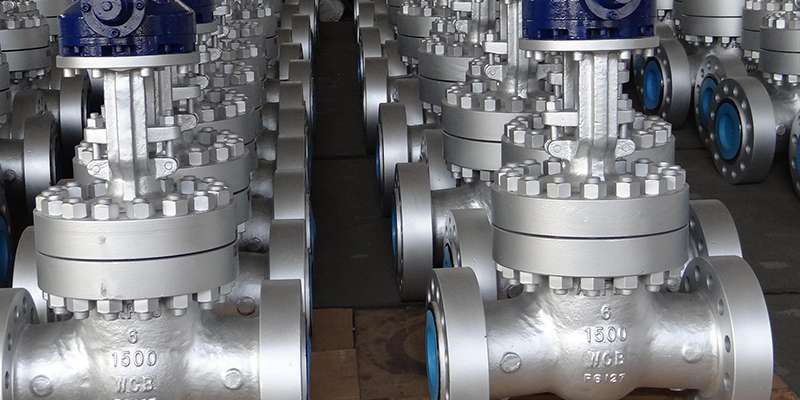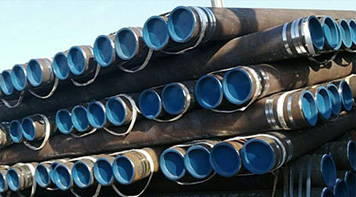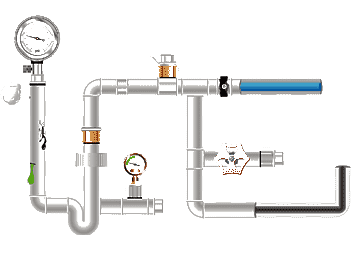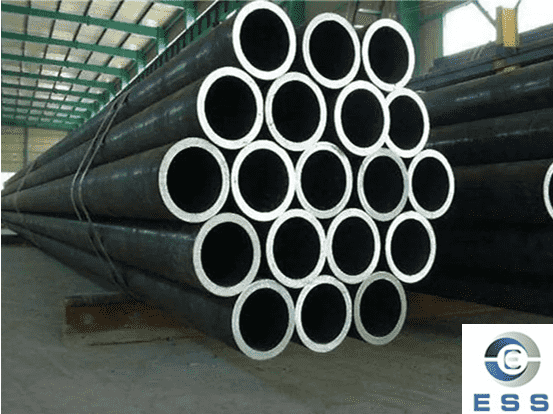Mild steel pipe (MS pipe full form) is a
type of structural steel pipe made of mild
steel. The main chemical
composition of MS pipe is iron (Fe) and a small amount of carbon (C),
with a carbon content typically between 0.05% and 0.25% (mass fraction). What
is the effect of such a low carbon content? Just 1% carbon is enough to give
steel properties such as strength, ductility, and durability. It is precisely
because of this carbon content that mild steel pipe performs well in heavy-duty
applications subjected to enormous physical stresses.
Furthermore, they are easy to manufacture
and can withstand cold and hot working well. Although their strength is still
lower than that of high
carbon steel pipes with a carbon content of up to 3%, their strength
can be enhanced through carburizing processes. Mild steel's main component is
iron, therefore it has strong magnetic properties. Due to its availability, it
has become one of the most widely used industrial materials.
Properties of Mild Steel Pipes
1. Mechanical Strength
Mild steel pipes possess excellent
mechanical strength. Their high tensile strength (approximately 330–560 MPa) allows them to withstand enormous loads.
2. Corrosion Resistance
While not completely rust-free, mild steel
pipes exhibit a degree of corrosion resistance, especially after protective
coating treatments such as galvanizing or painting. This characteristic extends
their service life to 10–25 years.
3. Versatility
The elongation of mild steel is typically
20%–30%.
Due to its ductility and weldability, MS
pipes can be bent, cut, and formed into various shapes to meet a wide range of
construction, machinery, and industrial applications.
4. Durability
Mild steel pipes possess high durability,
operating stably under harsh conditions without significant wear.
This makes them particularly suitable for
applications requiring frequent exposure to mechanical stress.
5. Cost-Effectiveness
Compared to high-carbon steel or alloy
steel, mild steel pipes are more affordable, making them an ideal choice for
large-scale projects, while offering comparable performance and durability.

Mild Steel Pipe Standards
Each country has its own method of
classifying metal alloys based on their properties and applications. Common
steel pipe grades cover standards from the United States, India, the United
Kingdom, Europe, Japan, and Australia. Among these, the American ASTM standard
is the most widely used classification system.
MS Pipe Standards Chart
|
Indian Standards
|
IS 1239
IS 4270
IS 1161
IS 3589
IS 3601
IS 9295
IS/IS0 3183
|
|
American Standards
|
ASTM A53
ASTM A120
ASTM A795
ASTM A500
API 5L
ASTM A135
ASTM A523
|
|
British Standards
|
BS 1387
BS 1775
BS 1139
BS 534
BS 6363
BS 3601
|
|
European Standards
|
EN 10224
EN 10255
EN
10219
EN 10217
EN 10296
|
|
Japanese Standards
|
JIS G 3452
JIS G 3444
JIS G 3454
JIS G 3455
|
|
Australian Standards
|
AS 1074
AS 1163
AS 1450
|
Applications of MS Pipes in Different
Standards
1. American Standards (ASTM / API)
ASTM A53
This mild steel alloy has low rigidity but
excellent machinability. It is commonly used for structural components and
domestic piping.
ASTM A120
General-purpose, economical standard for
low-pressure liquid transportation.
ASTM A795
Standard for black and galvanized welded
steel pipes for fire protection systems. Usually available in black galvanized
form. Due to its high-pressure resistance, it is commonly used in industrial,
mechanical, and HVAC applications.
ASTM A500
Cold-formed welded structural pipe, used
for the manufacture of square
and rectangular tubes.
API 5L
Standard for carbon
steel pipes for oil and gas pipelines.
ASTM A135
A135 mild steel has excellent temperature
resistance, making it suitable for fire protection. It is also used for
transporting gases, steam, and other liquids.
ASTM A523
Used for high-pressure piping and cable
laying. It can be heat-treated and coated with anti-corrosion coatings.
2. Indian Standards (IS/ISO)
IS 1239
IS 1239 (Part 1) applicable to black and galvanized steel
pipes for water, gas, steam, and air transport.
IS 4270/IS 9295
Applicable to large-diameter welded
steel pipes and pressure piping.
IS 1161
Steel pipes for structural and mechanical
applications.
IS 3589
Welded steel pipes suitable for water and
gas transport.
IS 3601
General purpose carbon steel pipes.
IS/ISO 3183
Standard for pipelines used in the oil and
gas industry.
3. British Standards (BS)
BS 1387
Black and galvanized welded steel pipes,
commonly used in building and water systems.
BS 1775 / BS 1139
Steel pipes for scaffolding and building
supports.
BS 534 / BS 6363
Water and sewage transport piping.
BS 3601
Carbon steel pipes for general structural
and engineering applications.
4. European Standards (EN)
EN 10224/EN 10217
Welded steel pipes for pressure piping and
fluid transport.
EN 10255
A versatile pipe grade suitable for welding
and threading.
EN 10219
Cold-formed welded structural steel
sections (square and rectangular tubes).
EN 10296
Steel pipes for mechanical and general
engineering applications.
5. Japanese Standards (JIS)
JIS G 3452
Steel pipes for water, gas, and steam
transport.
JIS G 3444
Carbon steel pipes for general structural
applications. Covers seamless and welded mild steel pipes used in civil
engineering applications.
JIS G 3454 / JIS G 3455
Steel pipes for high-temperature pressure
piping and steam piping.
6. Australian Standards (AS)
AS 1074
Black and galvanized steel pipes for water
and gas transmission.
AS 1163
Cold-formed welded structural steel
(equivalent to EN 10219).
AS 1450
High-strength mild steel structural pipes.
Differences Between ASTM, EN, JIS, IS,
and BS
1. ASTM (American Society for Testing and
Materials)
One of the most widely used standards
systems globally, emphasizing uniformity in chemical composition, mechanical
properties, and manufacturing processes.
2. EN (European Standard)
Focuses on dimensional tolerances and
weldability, commonly used in construction and mechanical engineering in the
European Union.
3. JIS (Japanese Industrial Standard)
Requires extremely high quality control,
suitable for high-precision manufacturing industries.
4. IS (Indian Standard)
Highly compatible with international
standards, commonly used for water pipes, structural pipes, and gas
transmission.
5. BS (British Standard)
An earlier industrial standard, widely used
in construction, scaffolding, and low-pressure systems.
FAQ
1. Which Standard of Mild Steel Pipe is
Most Common?
In the international market, ASTM A53 and
EN 10255 are the two most widely used MS pipe grades.
2. What is the Difference Between EN 10219 and EN
10210 Pipes?
EN 10219: Cold-formed welded structural
steel standard, commonly found in square and rectangular tubes.
EN 10210: Hot-formed structural steel
standard, with higher mechanical properties, suitable for structures bearing
high loads.
3. How to Identify Which Standard a Mild Steel
Pipe Conforms to?
Check the pipe markings:
Standard number (e.g., ASTM A53 / EN 10255)
Grade (e.g., Grade A, B, C)
Specifications (OD×WT)
Manufacturer's name and Heat No.
This information is usually marked on the
pipe surface in the form of inkjet printing or engraving.
Summary
Mild steel pipes are among the most
commonly used steel pipe types globally due to their excellent machinability,
robust structural properties, and economic efficiency. Different countries
regulate them through standards such as ASTM, EN, JIS, IS, BS, and AS to ensure
consistency and safety in their structure, transportation, and industrial
applications.













 Eastern Steel Manufacturing Co.,Ltd not only improve product production and sales services, but also provide additional value-added services. As long as you need, we can complete your specific needs together.
Eastern Steel Manufacturing Co.,Ltd not only improve product production and sales services, but also provide additional value-added services. As long as you need, we can complete your specific needs together.










